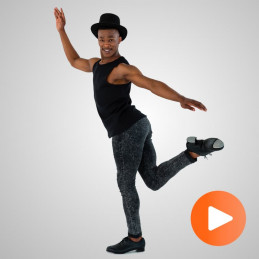Tap originates from the fusion of Swedish dances from Ireland, Northern England and Scotland, combined with dances practiced by African-Americans, such as the juba, between the 17th and 18th centuries.
In 1739, black slaves were prohibited from using percussion instruments. This motivated them to perform percussion with their feet and hands.
Originally danced by slaves, it was polished in the United States after its War. The dancers, immigrants from various groups, would gather to compete and show off their best qualities and movements. In this way, while the dances were mixed, a new style of dance was born: the American Tap. The dancers relaxed the rigid Irish postures, used arms and shoulders to mark, and new steps were added. Improvisation was the main thing in this dance.
After its rise in the 1930s and 1940s, when it achieved great popularity due to its presence in various Hollywood musicals, and with El Claqué, it is an American dance in which the feet move rhythmically while a musical tap dance is performed. Artists like Fred Astaire left the North American stages until resurfacing in the 70s. Already in the 80s there were a series of Broadway shows Sophisticated, Ladies, Black and Blue and movies (White Nights, The Cotton Club) that gave him a new momentum.
The zapateo was always located within the "show business", rather than in the "serious dance" circuit. However, today there are large companies that make seasons in theaters that were previously unthinkable for tap and their shows are merely dedicated to this dance.
On May 25, the International Day of Tap Dance or Tap Dance is celebrated.





